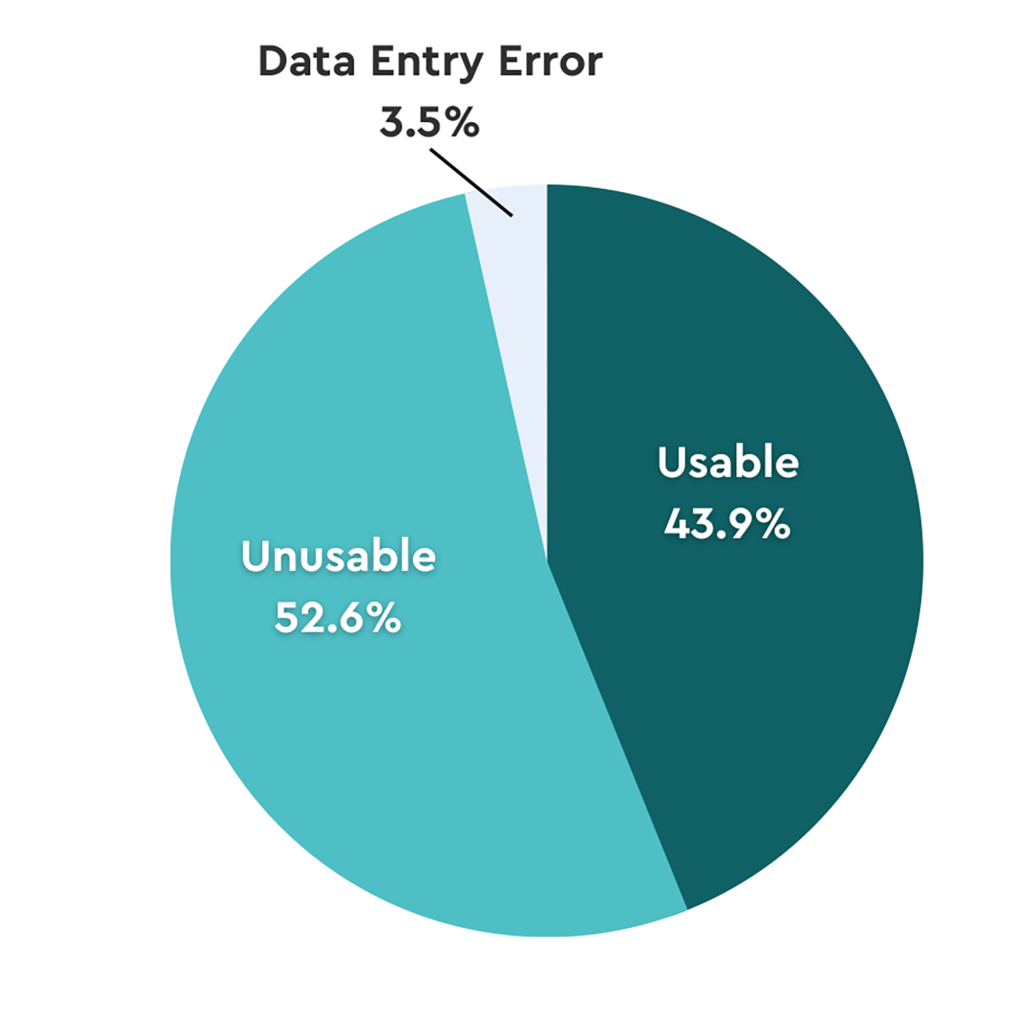Big Dog Behavior Data: Shelter Animals Count with Hill’s Pet Nutrition
December 13, 2024

In our last blog, we discussed how a lack of standardized data entry contributes to a high volume of unusable “subtypes” in shelter data. When we have a lot of this unusable information, it makes questions like “what is the most common owner surrender reason?” and “are more strays picked up by a finder or an officer?” nearly impossible to accurately answer. Data entry errors accounted for an error rate of 3.5% in the sample we analyzed, creating another barrier to gaining detailed insights into intake reasons.

We are all human… and of course, humans make mistakes! Some amount of human error is to be expected in any dataset. While this amount of error (3.5%) won’t heavily skew the data, it is important to minimize the potential for error wherever possible. A few of the common errors identified include:
– subtypes filed under the wrong intake
category
– subtypes containing contradictory
information
– subtypes containing multiple reasons
for surrender
For some subtypes it makes little to no sense for them to appear in certain intake categories. For example, if an animal’s intake type is “Owner Surrender,” then their subtype should not indicate that they were recently found stray. Some additional examples are included in the diagram below:

Contradictory and nondescript information can also result in a data point being unusable or unvaluable. For example, every stray animal is either brought in by a field services officer or a member of the public. If an animal’s intake subtype is “Field Pick Up/Over the Counter” this suggests the animal was brought in by both the field services officer and a member of the public (which we know is not possible) OR that it was brought in by either one of those finders. We need the clarification, otherwise this doesn’t provide any more valuable information for the “Stray” subtype than entering nothing at all.

To discuss our last data entry error type, let’s refresh ourselves on the purpose of an intake subtype. Intake type tells us how an animal got to the shelter, but intake subtypes are intended to provide greater detail on why they are in the shelter in the first place.
The stories behind why pets are in our shelter systems are complex and often many factors contribute to an owner’s decision to surrender. Intake staff are encouraged to capture as much detail as possible about those circumstances, but software may limit us to one subtype choice. Due to these limitations, we see subtypes with multiple intake reasons combined into one subtype. For example, the subtype “Behavior/Temperament of Current Pet” captures all intakes related to the behavior of the new pet and the behavior of the resident pet, but this presents a problem: We lack clarity around this exact situation. The surrenderer could have behavior issues with only the new pet, only the resident pet, or both pets.
This becomes an issue when attempting to sort these multi-reason subtypes into more general categories with the goal of getting counts on the most common reasons for surrendering an animal. In our example, the behavior of the new pet and the behavior of the resident pet would likely be sorted into two different general categories: the first in a “Behavior” category and the second in a “Compatibility” category. If the subtype’s reasons can’t be sorted to the same general category, then any associated records would be considered unusable.
Review your intake subtypes to ensure that they are filed under the correct intake type. If any subtypes are listed under the wrong intake type, then your SMS may allow you to “hide” the subtype in admin settings. This way your historical data is not altered, but going forward intake staff can only choose appropriate subtypes.
Create a guide for staff to know what subtypes should be used for specific intake types and common scenarios that the subtypes apply to. If your organization already has one of these, let us know! As we work on standardizing data entry, your current procedures can be helpful.
Each of our interactions with the public gives us the opportunity to gain a little more insight into why they can no longer care for their pet. It is our goal to use data to answer the industry’s most pressing questions, making it vital that we make the most of each data point collected. Taking steps to avoid common data entry errors will help close the usable vs unusable data gap. Usable data is the foundation of reliable insights, enabling organizations to make informed decisions, optimize processes, and achieve better outcomes for pets and people.
